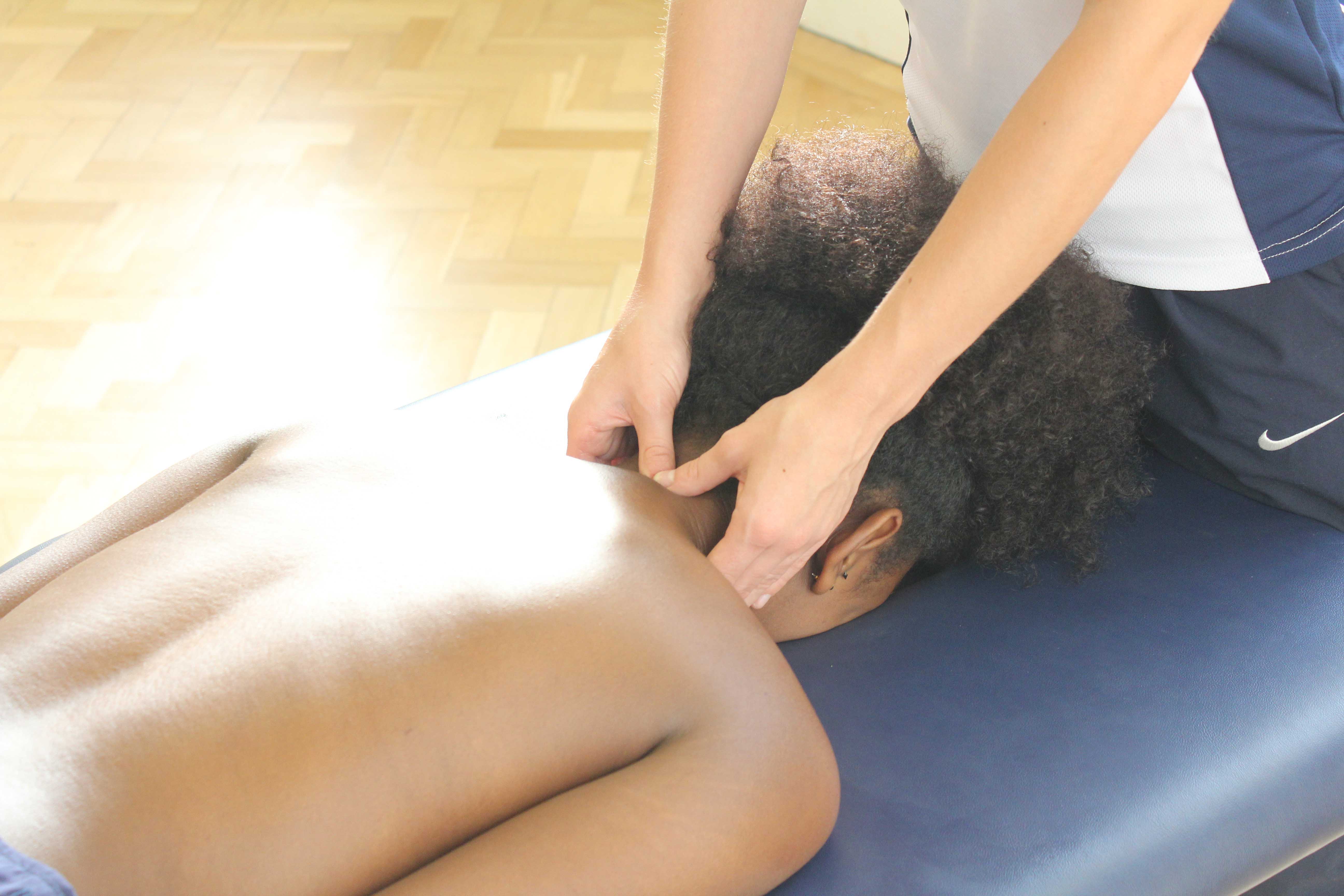Physiotherapy at Physio.co.uk will promote recovery and help people regain their functional potential so they can life to the full.
Common types of amputees we treat at Physio.co.uk include:
- Above knee amputation
- Below knee amputation
- Above elbow amputation
- Forearm amputation
- Other types of amputation
- Helping people accustom to their amputated limb
- Maximising your physical potential
- Improving your independence
- Reducing pain
- Improving gait
- Increasing balance
- Improving quality of life
Our physiotherapists at Physio.co.uk also work closely with occupational therapists who can advise you on any equipment or adaptations needed.
 Above: Mobilisations of the cervical vertebrea by an experienced physiotherapist
Above: Mobilisations of the cervical vertebrea by an experienced physiotherapistPhysiotherapy Following Amputation
Amputation is the removal of a body extremity by surgery or due to trauma. Losing a can be an overwhelming experience for anyone to go through. It requires a combined professional approach to help you adjust to living without your limb. Physiotherapists play a key role during the rehabilitation of individuals who have had an amputation.
There can be several reasons why someone would become an amputee; however, the two main categories are:
- Trauma –when the limb is badly damaged in an accident and either the blood supply or the structure of the limb cannot be saved
- Vascular disease - if it is serious it may result in a loss of blood supply to the limb after previous medical management, which can lead to an amputation
A new amputee can experience the following signs and symptoms:
Pre-operation Physiotherapy
Prior to non-emergency amputation a physiotherapist can provide:
- Pre-operation exercises to maintain current muscle strength and range of movement
- Education on what to expect post-surgery regarding rehabilitation
Post-operation Physiotherapy
A physiotherapist can provide several interventions to assist with post-operation rehabilitation. Treatments may include:
- Massage to relieve pain, promote the healing process and relieve tension in muscles surrounding the stump or the opposite limb where problems can arise due to over-use caused by compensation.
- Acupuncture and electrical stimulation can be used to treat phantom limb pain and phantom sensation.
- Exercises to minimise stiffness in other joints and work towards strengthening whilst the patient remains on bed-rest.
Rehabilitation in Hospital
During your hospital stay a physiotherapist will teach you some exercises to perform in bed and they will also teach you transfers which would include getting in and out of bed, into a wheelchair and on and off the toilet.
Whilst Still in Hospital
You will continue with an exercise program to strengthen the muscles around your stump and maintain strength in all other limbs. Here they would also begin to work on gait, providing any appropriate walking aids, if required.
Rehabilitation Following Hospital Discharge
You may be discharged from hospital as early as two weeks post-operation. It is important to continue with your exercise program.
Although all physiotherapy treatment plans will be individualised, in general, physiotherapy intervention programs would include:
- Amputee strengthening program which could including a variety of exercises:
- Isometric
- Isotonic
- Isokinetic
- Manual
- Active upper and lower limb extremity strengthening
- Functional exercises for the upper and lower limbs
- Pre-gait training exercises
- Weight bearing and balance exercises
- Pelvic and trunk exercises
- Gait training
- Injury prevention and management strategies
Summary
Physiotherapy plays a major role in the rehabilitation of individuals following amputation. Physio.co.uk therapy is able to provide you with expert guidance and help to anyone who has lost a limb.
To find out more about our services, or to arrange an appointment please call us now on 0330 088 7800 or email office@physio.co.uk

 0330 088 7800
0330 088 7800

































